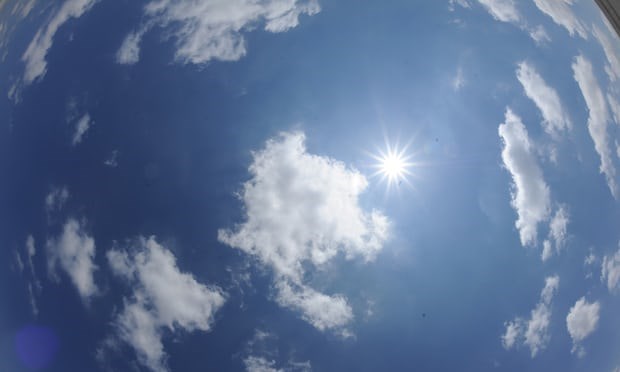‘Mystery clouds’ of the type studied at the Weizmann Institute of Science, Israel. Photograph: Ilan Koren
“Cotton wool” clouds above sub-tropical shores unmasked as formations caused by humidity variations high in the sky
The weather forecast had predicted a cloudless day, but when Ilan Koren, an atmospheric scientist, looked up he saw small “cotton wool” clouds dotted across the bright blue sky over Israel.
“Mystery” clouds like these are common on hot sunny days along humid sub-tropical shores, like those along the Mediterranean. Yet classical physics suggests these clouds shouldn’t exist. Now scientists think they might have finally solved the puzzle of how mystery clouds are made.
Convection is the usual process that creates clouds on a hot sunny day. Warm air rises above warm regions of land (such as macadamed car parks, ploughed fields and coniferous forests). As the parcel of air rises it cools and its ability to hold moisture decreases. Eventually, if it rises high enough, it cannot hold any more water so droplets form and a fluffy cloud appears.
But the clouds that Koren saw were a puzzle because they occurred below the predicted 100% humidity level. To understand these mystery clouds, Koren, based at the Weizmann Institute of Science, with his colleagues observed clouds and made regular measurements of changes in temperature and humidity at different altitudes. This was done over a 92-day period in the summer of 2011.
Using these measurements they simulated the likely atmospheric mixing, and discovered that the mystery clouds were caused by variations in humidity not at ground surface but a few hundred metres up, perhaps where moist ocean air was mixing with dry land air. Normally cumulus clouds are caused by temperature variations on the ground surface.
Writing in the journal Environmental Research Letters the scientists estimated that these previously misunderstood clouds could be responsible for reflecting up to 4 watts per square metre – equivalent to the local warming effect from greenhouse gases.

